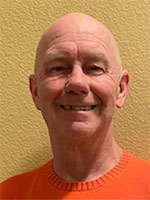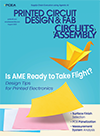Features Articles
 Naka nailed it: The domestic PCB industry will flounder without a clear direction.
Naka nailed it: The domestic PCB industry will flounder without a clear direction.
“History is always repeating itself, but each time the price goes up.” – Will Durant
In February 2017, I wrote a column titled “An Afternoon with Naka” in which Hayao Nakahara (or Naka to his friends) – a true PCB veteran embarking on his 60th year in the industry – described the state of the US PCB manufacturing. Naka nailed it then. And eight years and two presidential administrations later, his analysis is just as applicable.
Let’s review some of what I call his “Naka-isms” and how they apply, with the additional element of tariffs, which, for obvious reasons, are top of mind for many in our industry right now.
 Predicting the future is tricky, especially when we don’t yet know the players.
Predicting the future is tricky, especially when we don’t yet know the players.
With over 40 years of new business development and marketing experience in the electronics manufacturing marketplace, no sales team requirement produces more dread, apathy or frustration than when we hear, “It is time for your new business forecast for next year.” Contract negotiations, board meetings, airplane travel after 9/11, Covid-induced supply-chain issues, dealing with your cable company and dental appointments; none of these compares to the angst sales leaders experience when forecasting new business from new clients they hope to win and have no current business relationship with.
Is there a less exact science to any required report or activity for salespeople than forecasting clients with whom you have no historical relationship and are competing against other EMS companies to win? Let’s examine some of the truths behind this requirement.
When we consider some of the variables that can affect an accurate, next-year new business forecast, it seems staggering:
 The designer’s (large) role to keep projects on track.
The designer’s (large) role to keep projects on track.
The restaurant industry has a saying, “Time to lean is time to clean.” The gist is that there is never a dull moment while the clock is ticking. Bearing in mind the importance of time, the PCB designer is often faced with the prospect of starting a layout before all the necessary data are on the table. A preliminary schematic and a rough outline are a step in the right direction but by no means the whole story.
That beginning may have been delayed while the schematic capture gets to a state where you have enough information to actually start the physical design segment. In the meantime, it’s always good to inquire about any new connectors or other components to get a jump on obtaining or creating the footprint for the library. These kinds of things are often left to the designer. Going to see the cognizant engineer – or at least chatting them up – will let them know you’re on the job and trying to push forward.
Electrical and mechanical engineers have a lot on their plate and can be spread thin. They can seem to have a high tolerance for risk when it comes to the schedule. That is, anything and everything can change at any time. The one exception is the tape-out date. This is the significant difference between a “waterfall schedule” and concurrent design.
 The infusion of AI into IoT infrastructures shows it’s vital to take cybersecurity seriously.
The infusion of AI into IoT infrastructures shows it’s vital to take cybersecurity seriously.
Although like many of us in this industry, I am fascinated by technology and curious to explore its possibilities, I am no hacker, well-intentioned or otherwise. Yet I do own a couple of gadgets, of course, available through reputable channels, that can sniff for open Internet ports and probe access-control systems, like hotel room keys. It’s got me thinking about the power of tools available to serious-minded hackers who devote their careers and considerable brain power to finding and attacking vulnerable targets online.
In the real, above-board world, we are placing increasing trust in the software applications that enable our lives, infrastructures, jobs and economies. And with the infusion of AI into all these applications, we know less and less about the mechanisms controlling them, or the values directing those mechanisms.
Keeping bad actors out is extremely important, especially as an increasing variety of cyber-physical systems – IoT applications – assist our daily lives at home, on the roads and in factories. As consumers, we enjoy legal protection against many types of cybercrime. We may not know when a connected device like an IP camera has been taken over and used in a botnet. These threats are abstract and virtual.
Using Lean Six Sigma to prioritize projects, optimize capex, and inform employee recognition.
Lean Six Sigma is a powerful tool for production teams committed to continuous improvement. Viewed as individual activities, however, the overall impact of the improvements it drives may not be obvious. The Continuous Improvement teams in SigmaTron International’s Tijuana, Mexico, facility address this with an annual review meeting that looks both at accomplishments over the past year and year-over-year trends. The top three teams are recognized for their accomplishments.
Watch out for the one who lives to throw a wrench in the works.
I have this idea. Rather than having the nuclear codes reside in the White House, they should embed with the American people on a rotating basis. Not unlike the Stanley Cup, which overnights in each offseason residence of the members of the NHL championship team. Do the same with the car keys to obliteration; move them from place to place nightly. Think of the possibilities: who will have the effrontery to keep up with the Joneses, especially when they have the power to unleash Armageddon with one push of a button? There goes the neighborhood, indeed. Think twice before criticizing their taste in wainscoting. Consider if the nuclear football kicked off in a house with Polish heritage and a long memory, still seething over the “stolen” Russian win in the gold medal game of the 1972 Olympic basketball tournament. Revenge is a dish best served with beer and hors d’oeuvres, watching live cable, and Poles do not fancy Russians. Talk about checks and balances. What could possibly go wrong with this exercise of grassroots democracy?
Press Releases
- Naprotek Appoints Mark Crebs to Lead Business Development for Products and Platforms
- Indium Corporation Expert to Present on AI Thermal Challenges at INEMI Forum on Complex Integrated Electronics
- PARMI Enhances Support for Brazilian Electronics Manufacturers with New Local Partnership
- ZESTRON Expands Capabilities with Addition of the EPS by i-Tech AG 75 Pallet Cleaning System


